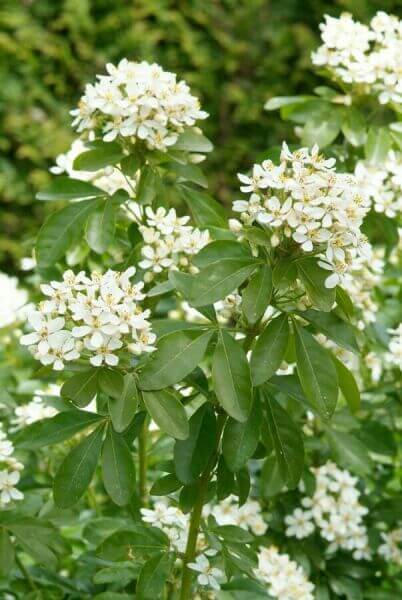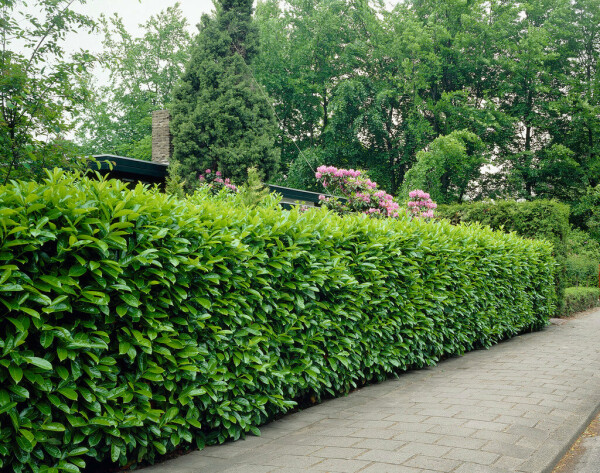Best Hedging Plants For Perimeter Hedges
Best Hedging Plants For Perimeter Hedges
Blog Article
Hedge Plants For Partitioning Gardens
Improve your garden's attraction with lavish hedge varieties such as Yew (Taxus), Thuja, Laurel, Photinia, and Bamboo, commemorated for their structural integrity and ecological advantages.
Yew and Thuja provide evergreen protection and winter strength, while Laurel offers fast development and broad, fragrant leaves.
Photinia adds seasonal beauty with its vibrant red foliage, and Bamboo provides a low-maintenance, serene ambiance.
These hedges improve air quality, minimize sound, and develop tranquil, personal areas.
Appropriate planting, spacing, and maintenance make sure energetic growth and environmental consistency.
Check out how these lavish ranges can elevate your garden's beauty and well-being.
Secret Takeaways
Transform Your Garden With Lush Hedge Varieties
- Select Yew for its thick, evergreen growth and unparalleled longevity.
- Opt for Laurel for its quick development and broad leaves, guaranteeing fast personal privacy.
- Pick Photinia for its vibrant seasonal foliage, which turns a striking dark red.
- Utilize Bamboo for a low-maintenance, winter-hardy hedge with aesthetic appeal.
- Space plants 2-3 per meter and prune frequently for optimal development and health.
Popular Hedge Plants
When changing a garden with lush hedge varieties, it's important to consider popular hedge plants such as Yew, Thuja, Laurel, and Photinia due to their unique qualities and advantages.
Yew (Taxus) is highly respected for its durability and dense, green growth, making it a prime option for withstanding landscapes.
Thuja is kept in mind for its evergreen foliage and robust winter durability.
Photinia adds seasonal vibrancy with red leaves that darken with time, creating dynamic visual appeal.
Laurel offers rapid growth and fragrant, broad leaves, perfect for fast personal privacy.
In Addition, Bamboo is an outstanding choice for ambiance, using a low-maintenance, winter-hardy alternative that improves the garden's visual with its sophisticated, swaying walking sticks.
These choices cater to a variety of horticultural requirements and preferences.
Benefits of Garden Hedges
Garden hedges provide a wide variety of advantages, making them a valuable addition to any landscape. These natural barriers are cost-efficient to execute and offer significant wind protection, boosting air flow and contributing to sound reduction. The dense foliage of hedges like Thuja and Beech ensures personal privacy by blocking visibility, developing a remote and peaceful environment.
Hedges likewise play a vital role in microclimate guideline, offering a stable environment that promotes plant growth and minimizes temperature fluctuations. Their detailed leaf structures filter toxins, improving air quality and adding to a much healthier garden community.
Furthermore, hedges master sound reduction, soaking up and deflecting sound waves to lower ambient sound levels. This dual functionality of providing both acoustic and visual personal privacy enhances the general tranquility and aesthetic appeal of any garden.
Planting and Upkeep Tips
For an effective hedge, careful preparation of the planting area is vital. Ensure the soil has appropriate pH and drain to support strong root development.
Area the plants properly for the chosen species. Water the hedge frequently during its preliminary growth phase, changing as needed with seasonal modifications.
Carry out a organized pest control and disease avoidance technique, using chemical or natural treatments when essential. Frequently check for aphids, termites, and fungal infections.
Apply mulch to maintain moisture and suppress weeds. Seasonal pruning promotes thick growth and air blood circulation, necessary for plant health.
Following these guidelines will assist you cultivate a dynamic, properly maintained hedge that boosts the beauty of your garden.
Spacing and Trimming Guidelines
Spacing and Trimming Guidelines
Appropriate spacing and cutting are essential for cultivating healthy, visually appealing hedges. Sufficient spacing ensures each plant receives adequate nutrients, light, and airflow.
Follow these standards for optimum hedge upkeep:
- Spacing: Position hedge plants 2-3 plants per meter to motivate robust growth.
- Pruning Techniques: Regular pruning is important for keeping wanted hedge height and shape. Cut brand-new growth in summertime and cut down older wood during winter.
- Seasonal Care: Adjust cutting schedules and approaches according to seasonal requirements to guarantee plant health.
- Hedge Height: Frequently display and cut to keep the wanted hedge height and accomplish uniform aesthetic appeals.
Abiding by these steps will ensure your hedge grows, enhancing both the appeal and performance of your garden.
Picking the Right Hedge
Selecting the Right Hedge
Selecting the appropriate hedge includes evaluating factors such as fully grown height, foliage density, and ecological resilience. Effective hedge plant choice requires comprehending each species' growth attributes and site-specific versatility.
For instance, Yew (Taxus) uses excellent durability and dense development, while Thuja is noteworthy for its winter season durability. Additionally, thinking about maintenance requirements is vital; fast-growing types like Laurel or Privet demand regular cutting, whereas low-maintenance options like Bamboo or Ivy may be more suitable for those seeking very little upkeep.
Ecological elements such as soil type, light availability, and wetness conditions must also direct the choice process. This mindful approach guarantees the chosen hedges will flourish, providing both functional and visual benefits to the garden landscape.
Delivery and Planting Advice
To ensure your hedge plants grow, they need to be delivered by specialized carriers and planted quickly upon arrival.
Follow these necessary steps for successful planting:
- Soil Preparation: Enhance the soil with raw material to improve drainage and nutrient content.
- Planting Depth: Create a trench twice the width and equivalent to the depth of the root ball.
- Watering Methods: Water completely after planting, keeping the soil regularly moist but not filled.
- Mulching: Apply a layer of mulch to keep moisture and reduce weeds.
Consumer Assistance and Service
Offered the crucial role of prompt support in horticultural pursuits, our consumer assistance team is available six days a week through telephone, email, and social networks to use professional suggestions and swiftly address any concerns. Their commitment to fast reaction times makes sure client fulfillment by resolving questions connected to plant health, optimum planting approaches, and upkeep schedules.

-------------------
Within 24 hours
Email
6 days a week
This thorough support system, reinforced by an outstanding 9.3/ 10 client ranking, highlights our dedication to boosting the gardening experience for every client.
Frequently Asked Questions
How Long Does It Take for Hedge Plants to Establish?
Hedge plants normally need one to 3 years to end up being completely developed, with the precise period varying by species and growing conditions.
Efficient care during this crucial period is essential for robust growth. Constant watering, alert weed control, and proper fertilizer application are pivotal in promoting strong root development.
For example, fast-growing types like Laurel might develop faster, while slower-growing varieties such as Yew might take longer. Diligent maintenance speeds up the facility process, resulting in dense and healthy hedges.
What Are the very best Hedge Plants for Privacy?
The question of the finest hedge plants for personal privacy involves evaluating evergreen and deciduous options.
Evergreen hedges like Thuja, Laurel, and Cypress supply year-round protection, guaranteeing continuous personal privacy.
On the other hand, read more deciduous hedges such as Beech provide seasonal privacy, shedding leaves in cooler months.
Secret maintenance pointers for personal privacy hedges include routine cutting, fertilizing in spring, and proper spacing-- normally 2 to 3 plants per meter.
Furthermore, consistent watering and diligent weed elimination are important for promoting healthy, dense development.
Can Hedge Plants Draw In Wildlife to My Garden?
Yes, hedge plants can attract wildlife to your garden by supplying important advantages like shelter, food, and nesting sites, thereby improving local biodiversity. Yew, holly, and laurel are excellent for bring in birds, while ivy supports a variety of bugs.
However, it is essential to note that there are some disadvantages, such as increased upkeep to manage bugs and regular maintenance. Carefully picking and keeping hedge varieties can assist stabilize these benefits and disadvantages, eventually cultivating a dynamic and sustainable ecosystem in your garden.
Are There Any Blooming Hedge Plants Available?
Yes, there are flowering hedge plants readily available that can enhance the charm of your garden.
For instance, Elaeagnus, likewise called Olive Willow, produces fragrant white flowers in the fall, including a touch of sophistication.
Photinia, another popular choice, showcases dynamic red leaves that develop into an abundant green, producing a dynamic visual effect throughout the seasons.
To ensure these plants prosper, it's important to practice appropriate pruning methods and seasonal upkeep, such as cutting brand-new growth in the summertime and cutting down in the winter season.
These procedures will assist maintain the health and aesthetic appeal of your flowering hedges.
How Do I Prevent Insects in My Hedge Plants?
To prevent insects in hedge plants, utilize natural insect control approaches and keep correct hedge care. Present beneficial insects like ladybugs, which prey on harmful pests, to create a balanced ecosystem.
Regularly examine your hedges for signs of invasion and immediately get rid of any afflicted parts to avoid the spread. Guarantee the health of your hedges by applying balanced fertilizers and providing adequate water.
Make use of mulching to maintain soil wetness and appropriate spacing to decrease plant stress and promote robust growth. These practices collectively assist in decreasing insect issues and maintaining a healthy hedge.
Conclusion
In essence, picking the ideal hedge varieties such as Yew, Thuja, and Laurel can transform any garden into a tranquil sanctuary. These plants offer year-round greenery, enhance visual appeal, and offer practical advantages like noise reduction and wind defense.
Appropriate planting techniques, precise spacing, constant watering, and seasonal trimming are essential for ideal growth.
Trustworthy delivery services and skilled client support make sure a seamless experience from purchase to planting, making it simpler than ever to raise your outdoor area.
Garden hedges offer a plethora of advantages, making them a valuable addition to any landscape. These natural barriers are economical to implement and supply considerable wind defense, improving air blood circulation and contributing to noise decrease. The thick foliage of hedges like Thuja and Beech ensures personal privacy by obstructing exposure, creating a secluded and tranquil environment.

Pruning Techniques: Regular pruning is necessary for keeping preferred hedge height and shape. Trim brand-new development in summertime and cut back older wood throughout winter season.
Report this page